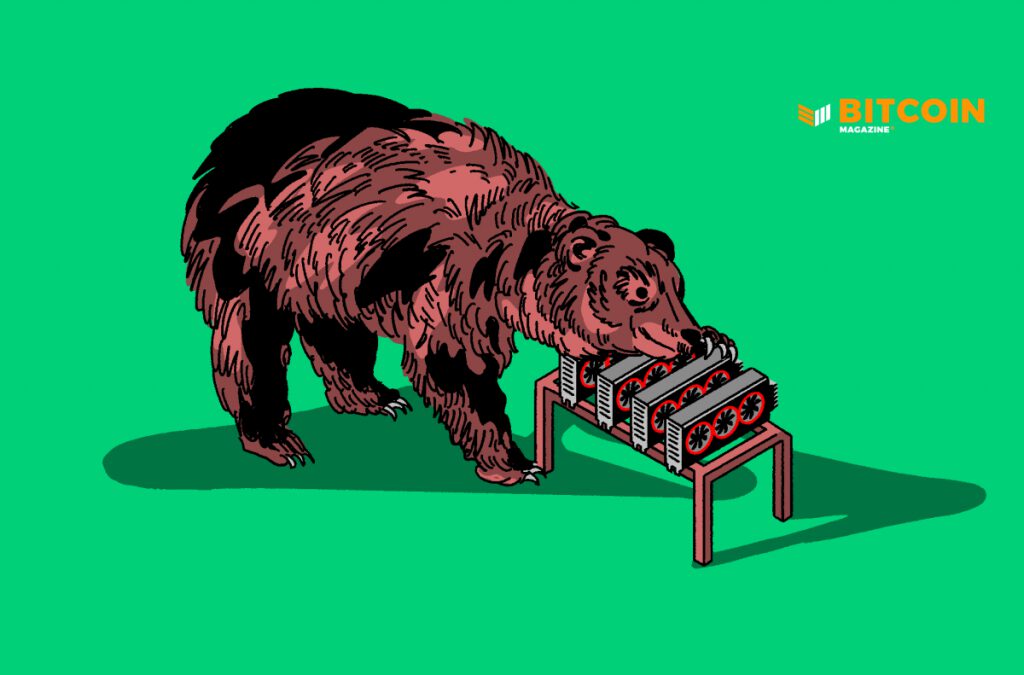Bitcoin continues trading well off its record highs as the latest bear market continues, thanks to a variety of macroeconomic shocks and strains. Bitcoin miners are especially feeling the pain of a depressed market, with hash rate climbing and hash price dropping.
Against this backdrop of doom and gloom, a growing cohort of investors are pooling capital with the intent of lending to or investing in distressed mining teams. Fresh capital injections may be just the solution to help struggling companies survive the bear market. But for others, simply throwing money at a failing venture fixes nothing. This article explores growing investor interest in distressed mining assets and discusses possible outcomes for these investments.
Bear Market Status Quo
It’s no secret that the bear market has progressively worsened for bitcoin mining companies even though bitcoin has traded in a range around $20,000 for the past several months. Some bitcoin public mining teams are facing delisting. Others are engaged in lawsuits. Some miners are selling hardware to strengthen their balance sheets. And a few are liquidating some of their reserves, selling more bitcoin than they mine each month.
(Readers can find more data and analysis about the bear market in this previous article from Bitcoin Magazine.)
Investors Are Circling Bitcoin Miners
While some mining teams are suffering the throes of a bear market, a growing cohort of investors see opportunity. Some of these investors are brand new to the mining industry. For example, Maple Finance — a decentralized finance team primarily focused on Ethereum and Solana, according to its website — launched a $300 million fully-collateralized lending pool targeting struggling bitcoin miners who need more capital. Peter Thiel also recently led a $3.7 million seed round for Block Green, a new lending protocol also targeting miners who need to access more capital.
Some of the investors accumulating funds to target the mining industry are substantially more experienced. Binance announced a $500 million fund to support distressed bitcoin mining teams. This monstrous crypto conglomerate currently operates the world’s fourth-largest bitcoin mining pool in addition to the world’s largest exchange platform. Jihan Wu, the bitcoin tycoon who co-founded Bitmain, also announced plans for a $250 million fund to buy distressed mining assets.
Notably absent from this list of crypto moguls eying the mining sector is FTX founder Sam Bankman-Fried. On Twitter, “SBF” put to rest speculation that he and his team were interested in mining investments by saying they “aren’t really looking into the space.” But he is reportedly considering bidding on bankrupt Celsius Network’s assets, which could include a now-bankrupt bitcoin mining unit that the troubled company poured roughly $500 million into.
In total, over $1 billion from these public announcements alone is sitting on the sidelines waiting to lend to or invest in distressed mining operations. Beyond these funds, other investors are privately clambering for cheap mining investments. According to Foundry, the industry’s largest full-spectrum mining services provider, they are bombarded with inquiries every week from interested buyers.
“We are fielding several calls a week from institutional investors looking to buy distressed mining assets,” the company said.
The Upside For Bitcoin Mining
Not everyone is rushing to throw money at mining, however. For many financial service providers watching the space, the general consensus (supported by abundant mining data) is that “the market’s fundamentally changed.” Against the enduring uncertainty in the global economy and harsh macroeconomic headwinds fueled by record inflation in almost every major economy, risks for jumping into bitcoin mining remain high. This is likely one reason why CEOs of major banks have clearly said they do not plan to finance mining operations.
But the long-term upside for mining is undeniable. In fact, so long as bitcoin itself has long-term upside potential, the mining sector does as well. This is partially why even traditional investment banking analysts have publicly noted multiple times over the past year that mining investments are becoming more attractive to them as the bear market continues.
Multiple mining companies are already moving to claim some of these opportunities through mergers, acquisitions and even public listings. Crusoe Energy, one of the industry’s leading teams using flare gas to power bitcoin mining, recently acquired Great American Mining (GAM), which also uses stranded oil and gas to mine bitcoin. CleanSpark also acquired an 80 megawatt turnkey mining site from Mawson. Rhodium announced its plans to go public via a reverse merger with a $1.7 billion valuation. And PrimeBlock, another mining company, announced plans to also go public via a $1.25 billion special purpose acquisition company (SPAC) merger.
More Money, More Problems
Even though a bear market presents far better opportunities to start mining compared to the hype of a bull market, the ugly truth for many new mining investors is that more money will not fix most problems. Throwing money at a troubled mining operation is no panacea. And weak balance sheets are often a symptom of deeper problems, which makes the path from distressed to solvent far from easy. In a bull market, mistakes are easy to overlook but also easy to remedy because the market is much more forgiving. In a bear market, mistakes are exponentially more expensive and difficult to undo.
For novice investors seeking their first exposure to the mining industry, investing in distressed mining assets could present some tough lessons on how the mining industry works and why these companies are struggling in the first place. But smart investors will no doubt learn quickly. The business of bitcoin mining has only gotten more competitive and less profitable (per unit of hash rate) with each passing year. Whether or not these financiers salivating over investing in mining have what it takes to win will be an exciting question to answer as the bear market continues.
This is a guest post by Zack Voell. Opinions expressed are entirely their own and do not necessarily reflect those of BTC Inc or Bitcoin Magazine.


